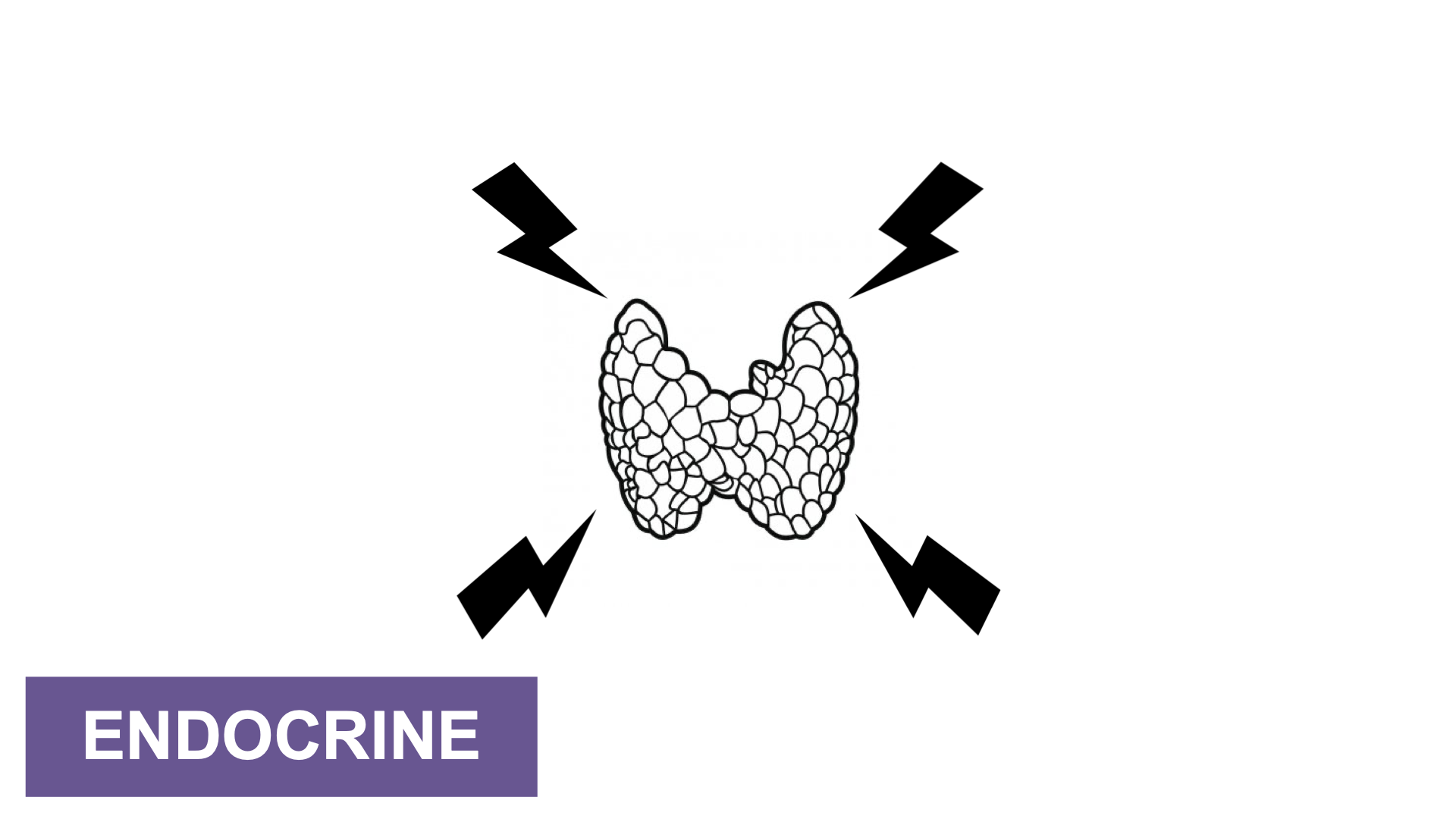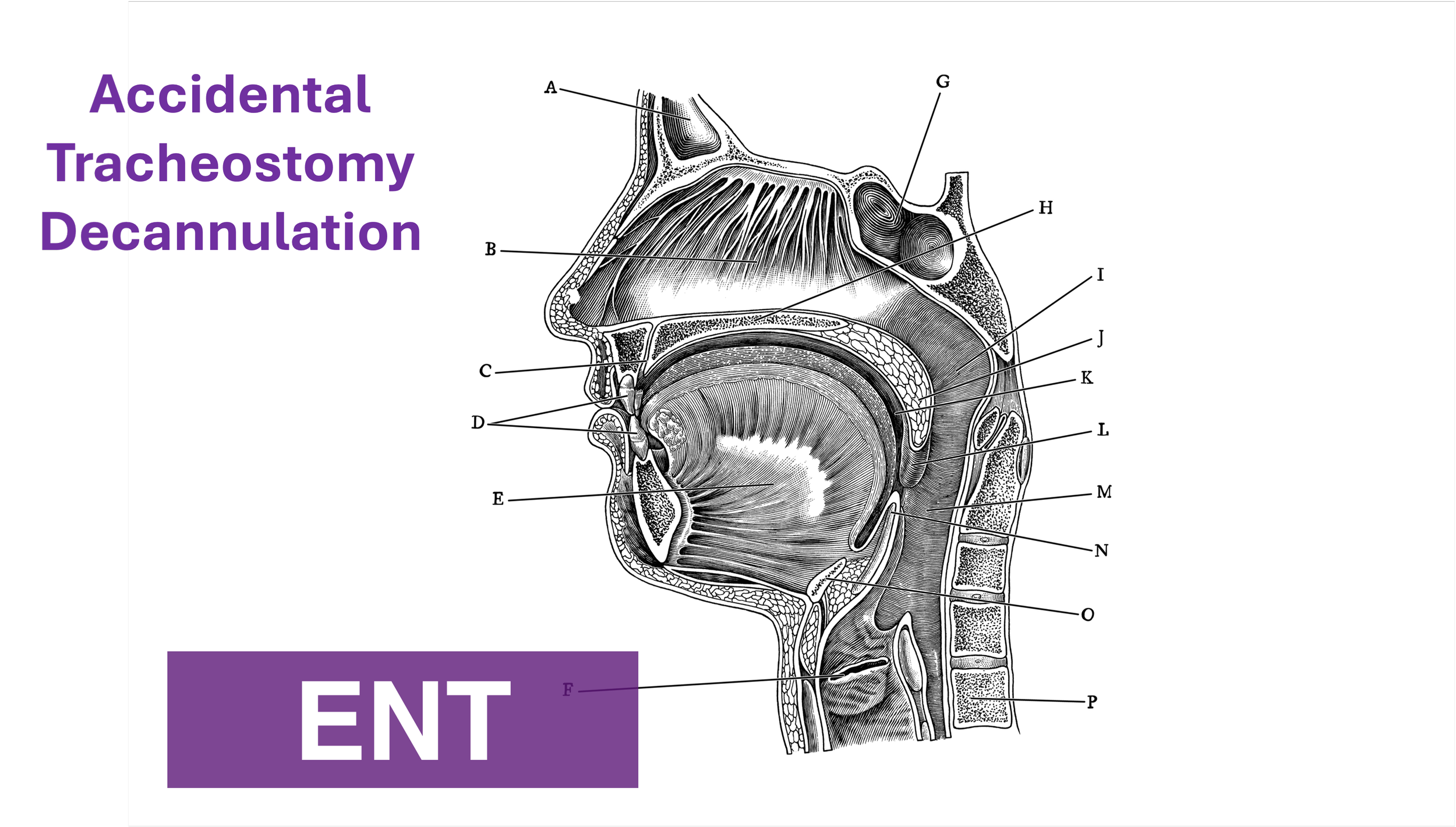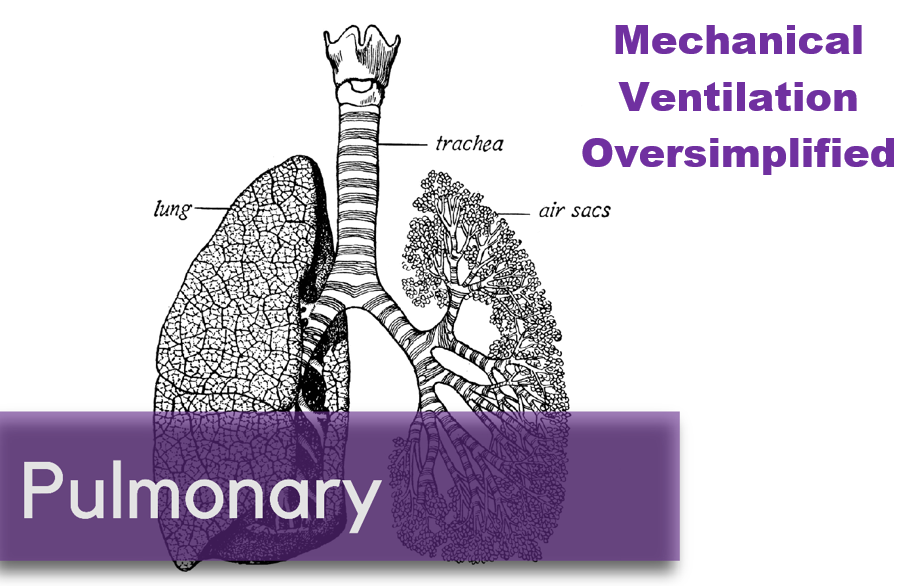A guide to recognize and manage the severe end of the spectrum of hypothyroidism
Hyponatremia
Written by: Jim O’Brien, MD (NUEM ‘23) Edited by: David Kaltman, MD (NUEM ‘20)
Expert Commentary by: Sarah Dhake, MD (NUEM ‘19) & Josh Waitzman, MD, PhD
Expert Commentary
Thanks for a great review on hyponatremia by Drs. O’Brien & Kaltman. I’ve recruited the expert insight from one of my favorite colleagues and fellow Northwestern University Feinberg School of Medicine graduate Joshua Waitzman, MD PhD, Instructor of Nephrology at Beth Israel Deaconess Medical Center in Boston, MA.
I’ll highlight a few points from an emergency medicine point of view with Dr. Waitzman’s additional commentary from the nephrology perspective.
I’d argue the primary question you need to answer in the ED for hyponatremia patients is whether or not hypertonic saline is indicated. For those well-appearing neurologically intact hyponatremia patients w/ sodium levels > 120, further work-up & analysis of the underlying etiology can be deferred to the inpatient side. It’s always appreciated to send the hyponatremia labs (eg urine lytes, osms, TSH, etc) for the admitting team, however differentiating SIADH from cerebral salt-wasting should not be at the top of your priority list. Especially as the etiology of hyponatremia is commonly multifold.
Dr. Waitzman: additionally, a key reminder is to STOP AND THINK before giving isotonic fluids (0.9% NS, LR, bicarb gtt, etc). For most patients with moderate-to-severe hyponatremia, giving a liter of normal saline is normally the wrong answer.
If your patient has SIADH, heart failure, or cirrhosis (common causes of hyponatremia), additional IV fluids will end up worsening the hyponatremia.
If your patient is volume depleted, isotonic fluids will fix the volume problem and shut off ADH, leading to rapid increases in urine output and rises in sodium. The worst thing we can do to patients with bad hyponatremia is overcorrect them too quickly.
If you are considering hypertonic saline, make sure to get your nephrologist on board early. Nephrology is the primary team that will be following your patient from arrival in the ED through discharge so if you’re debating whether the patient requires 3% NaCl, please consult your nephrology team ASAP. Though w/ that said, if your patient is seizing due to hyponatremia, push the hypertonic then get nephrology on board afterwards.
Dr. Waitzman: 100%. If you’re debating on hypertonic saline, call nephrology at any time. However, for the sake of your friendly overworked nephrology fellow, please wait until the AM before calling about patients who appear well and have sodium > 125. When consulting nephrology for hyponatremia, please have a urine sodium, potassium, and creatinine at the ready.
Hypertonic saline is not only indicated for seizures, coma, suspected cerebral herniation or focal neurological deficits as noted above. Keep in mind the indication for 3% also extends to altered mental status and can present w/ simple confusion or even “just acting off” from baseline. Do keep in mind the acuteness of the neurologic status is also imperative to determining the need of hypertonic. More acute symptoms = higher likelihood of needing 3%. It’s essential to get background information from family/friends if the patient is unable to provide any additional history regarding their own baseline level of functioning.
Dr. Waitzman: In my mind, using hypertonic saline should be based on three things.
First, how bad is the sodium level? It’s normally not worth it for most patients above 120.
Second, how acute is the hyponatremia? Hypertonic can be risky for those with chronic hyponatremia but curative for those with hyperacute hyponatremia like marathon runners.
Third, how severe are the symptoms? Seizures attributed to hyponatremia need treatment ASAP.
Because I’m a nephrologist, I approach the use of hypertonic saline like an equation, combining the acuteness of the hyponatremia with the severity of symptoms. For example, the more recent the sodium drop w/ more severe symptoms = more comfortable w/ hypertonic. The more chronic the hyponatremia and the less severe symptoms = hypertonic may have more risk than benefit.
Of note, you do NOT need a central line for hypertonic saline administration. Though this is dictated by your own hospital protocols, hypertonic saline has been shown to be safe when pushed in small doses through a large-bore peripheral (proximally placed) IV [1,2]. Though if your administration says differently, do not waste time putting in a triple lumen catheter if hypertonic is truly indicated in your hyponatremia patient. Drill an IO and push the 100-150cc 3% NaCl as soon as possible.
Dr. Waitzman: PREACH.
Do remember that pseudo-hyponatremia is a thing. Most commonly seen in our ED patients w/ hyperglycemia, other solutes which can lead to pseudo-hyponatremia are mannitol, glycol, or maltose (all three most commonly encountered on the inpatient side or post-outpatient urologic procedures). If you appreciate an elevated glucose on your chemistry panel, you can use the following equation
Corrected Na = Measured Na + [(1.6 * (glucose-100)/100)] [3]
or this helpful link via MDCalc (https://www.mdcalc.com/sodium-correction-hyperglycemia) to determine the appropriate corrected sodium.
Dr. Waitzman: If you hate math, consider a blood gas sodium. There is no pseudohyponatremia on a blood gas sodium and it results faster than your normal chemistry panel sodium level.
MDMA/ecstasy use is an uncommon cause of hyponatremia that should not be forgotten [4]. Keep that in mind in your presumed “intoxicated” young party-goers, especially those where these drugs are prevalent (eg raves, music-festivals, etc). MDMA leads to hyponatremia by activation of arginine vasopressin which increases kidney free water absorption [5].
Vaptans have not been established as standard of care for hyponatremia in emergency medicine. If these are to be utilized in an ED patient, it is essential that there is a nephrologist on board who is actively involved in the patient’s management.
Dr. Waitzman: wholeheartedly agree. Vaptans don’t have a place in the acute settings (like the ED) and have a huge risk of over-correcting the sodium. If you need to acutely correct hyponatremia, hypertonic is the answer, not vaptans.
With boarding being a nation-wide issue, one final piece of commentary from both the emergency medicine & nephrology perspective: if you’re sending your patient to the ICU for hyponatremia, it’s because they require q2hr sodium levels. Please continue those q2hr sodium levels while they remain under your care in the ED while waiting for an ICU bed. Blood gas sodiums are a great way to trend sodium levels as they’re accurate & result quickly (and avoid the potential for pseudohyponatremia as described above).
I’d like to extend an incredibly huge thank you & sincere gratitude to Dr. Waitzman for his assistance & expertise on this expert commentary. We’re all exceptionally lucky to work with such fantastic nephrology colleagues and are eternally appreciative for all their help, insight, and expertise.
References:
Alenazi AO, Alhalimi ZM, Almatar MH, Alhajji TA. Safety of Peripheral Administration of 3% Hypertonic Saline in Critically Ill Patients: A Literature Review. Crit Care Nurse. 2021 Feb 1;41(1):25-30. doi: 10.4037/ccn2021400. PMID: 33560431.
Mesghali E, Fitter S, Bahjri K, Moussavi K. Safety of Peripheral Line Administration of 3% Hypertonic Saline and Mannitol in the Emergency Department. J Emerg Med. 2019 Apr;56(4):431-436. doi: 10.1016/j.jemermed.2018.12.046. Epub 2019 Feb 8. PMID: 30745195.
Katz MA. Hyperglycemia-induced hyponatremia--calculation of expected serum sodium depression. N Engl J Med. 1973 Oct 18;289(16):843-4. doi: 10.1056/NEJM197310182891607. PMID: 4763428.
Petrino R, Marino R. Fluids and Electrolytes. In: Tintinalli JE, Ma O, Yealy DM, Meckler GD, Stapczynski J, Cline DM, Thomas SH. eds. Tintinalli's Emergency Medicine: A Comprehensive Study Guide, 9e. McGraw Hill; Accessed July 21, 2021.
Campbell GA, Rosner MH. The agony of ecstasy: MDMA (3,4-methylenedioxymethamphetamine) and the kidney. Clin J Am Soc Nephrol. 2008 Nov;3(6):1852-60. doi: 10.2215/CJN.02080508. Epub 2008 Aug 6. PMID: 18684895.
Sarah Dhake, MD
Division of Emergency Medicine, NorthShore University HealthSystem
Clinical Assistant Professor, University of Chicago - Pritzker School of Medicine
Twitter: @ssandersEM
sdhake@northshore.org
Joshua Waitzman, MD PhD
Instructor in Medicine, Harvard Medical School
Division of Nephrology, Department of Medicine
Beth Israel Deaconess Medical Center
Twitter: @Jwaitz
jswaitzm@bidmc.harvard.edu
How To Cite This Post:
[Peer-Reviewed, Web Publication] O’Brien, J. Kaltman, D. (2022, Jan 10). Hyponatremia. [NUEM Blog. Expert Commentary by Dhake, S and Waitzman, J]. Retrieved from http://www.nuemblog.com/blog/hyponatremia
Other Posts You May Enjoy
References
share to twitter u%
Add SEO info
Thyroid Storm ED Diagnosis and Management
Written by: Shawn Luo, MD (NUEM ‘22) Edited by: Steve Chukwuelebe, MD (NUEM '19) Expert Commentary by: Samia Farooqi, MD (NUEM '16)
Expert Commentary
For those of you who have not yet cared for a patient in Thyroid Storm, I guarantee that the experience will humble you. As far as endocrine emergencies go, this one is (quite literally) a killer. In 1993, Burch and Wartofsky cited mortality rates as high as 20 to 50% [1]. In more recent literature, the mortality rate of this condition is still at a whopping 10% [2]. As you can see from the beautifully presented infographic above, there are a number of complexities that factor into the diagnosis and treatment of Thyroid Storm. This is in part due to the fact that thyroid hormone affects all organ systems, with clinical manifestations of disease involving everything from cardiac dysrhythmia to profound GI losses secondary to vomiting and diarrhea to acute psychosis. To ground this infographic in clinical reality, where we know that diagnoses are not always easy to make and the decision between one therapeutic option versus another is not always clear, I offer you just a few additional points:
1. Making this diagnosis requires that you actually think about it in the first place. There is no single diagnostic test or image that will clinch this diagnosis for you. The Burch and Wartofsky criteria are clinical findings that you as the provider must use in the correct context for them to be useful. This is a rare condition, and your availability bias will be working against you here. Patient presentations can be vague and there is incredible overlap with other disease processes, with chief complaints ranging from anxiety to vomiting and abdominal pain to leg swelling.
2. Once this diagnosis has been considered or made, understand that these patients have incredibly complex hemodynamics, with multiple potential factors in play at any given time: hypovolemia from profound GI losses, concomitant sepsis, high output cardiac failure, and cardiac systolic dysfunction. With regards to this last point, there is a high incidence of decompensated heart failure in patients with thyroid storm, and those with cardiogenic shock are at some of the greatest risk of mortality [2, 3, 4]. As such, it behooves you to re-assess these patients’ volume status frequently. Examine them closely, and then re-examine them. Use your bedside ultrasound to assess their cardiac output, IVC, and lung windows. While they may be profoundly hypertensive when you first administer a beta blocker, concomitant sepsis and hypovolemia may surface very quickly as the patient’s blood pressure plummets.
3. This leads to my next point: when given the choice between propranolol and esmolol in managing tachydysrhythmia (whether profound sinus tachycardia or atrial fibrillation) in the context of Thyroid Storm, strongly consider esmolol. The Japan Thyroid Association and Japan Endocrine Society Task Force specifically cites increased mortality rates in patients for whom propranolol was used versus esmolol or landiolol (super short-acting beta blocker used in Japan) [3]. Much of the benefit to using esmolol over propranolol is in its much shorter half-life. The alpha and beta half-life for propranolol are 10 minutes and 2.3 hours, respectively, whereas the alpha and beta half-life for esmolol are 2 minutes and 9 minutes, respectively. Once the infusion is stopped, the effect of esmolol will have completely disappeared by 18 minutes [3].
4. When asked during oral boards how you would manage a patient with Thyroid Storm, a response involving antithyroid agents, inorganic iodide, corticosteroids, and beta blockers would score you full marks. However, I would encourage you to also consider thoughtful administration of IV fluids (with frequent re-assessment of volume status), early empiric antibiotics, inotropic agents for patients in cardiogenic shock, and psychotropic medications as needed for restlessness/delirium/psychosis (with olanzapine preferred over haldol) [3].
Diagnosis and management of Thyroid storm in the Emergency Department requires us to draw upon so many of our expert skills in approaching undifferentiated and critically ill patients. I hope that these points help to provide you with just a few more tools to include in your arsenal as you go forth.
References
[1] Burch, HB, Wartofsky, L. (1993). Life-threatening thyrotoxicosis: Thyroid storm. Endocrinology and Metabolism Clinics of North America, 22(2): 263-77.
[2] Akamizu, T. (2018). Thyroid Storm: A Japanese Perspective. Thyroid, 28:1.
[3] Satoh, T, et al. (2016). 2016 Guidelines for the Management of Thyroid Storm from The Japan Thyroid Association and Japan Endocrine Society (First edition). Endocrine Journal, 63: 12 (1025-1064).
[4] Bourcier, S, et al. (2020). Thyroid Storm in the ICU: A Retrospective Multicenter Study. Critical Care Medicine, 48:1 (83-90).
Samia Farooqi, MD
Assistant Professor
Department of Emergency Medicine
UT Southwestern
How To Cite This Post:
[Peer-Reviewed, Web Publication] Luo, S. Chukwuelebe, S. (2021, April 19). Thyroid Storm ED Diagnosis and Management. [NUEM Blog. Expert Commentary by Farooqi, S]. Retrieved from http://www.nuemblog.com/blog/thyroid-storm.





















